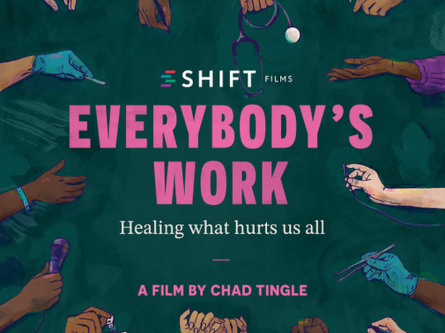By Bryn E. Mumma, MD, MAS
Associate Professor
UC Davis Department of Emergency Medicine
Solano County EMS Medical Director
In honor of Human Trafficking Awareness Month, we would like to share information to help increase our awareness of human trafficking at UC Davis Health.
What is human trafficking?
Human trafficking is defined as the recruitment, transportation, transfer, harboring or receipt of persons using force, fraud, or coercion for the purpose of labor services or commercial sex acts. Notably, individuals younger than 18 years of age engaging in commercial sex acts are automatically considered human trafficking victims under U.S. federal law. People are trafficked into many industries including, but not limited to, domestic work, restaurants, agriculture, construction, and the sex industry.
Who is trafficked? While defining the scope of human trafficking is extremely challenging, over 400,000 trafficked persons are estimated to live within the United States. Individuals of all sexes, genders, races, and ages can be trafficked. Any condition that marginalizes or isolates an individual also places them at risk of human trafficking. Some examples include immigration status, substance use, homelessness, mental health conditions, poverty, and exposure to other forms of violence. Due to experiences of other forms of oppression, people of color and LGBTQI populations are at disproportionate risk to be trafficked.
Where is human trafficking? Human trafficking exists worldwide and has been reported in all 50 US states, including in our local community. Importantly, the majority (67-88%) of trafficked persons in the United States access medical care during their exploitation. Therefore, health care settings such as UC Davis Health provide a critical opportunity for recognizing and intervening in cases of human trafficking.
Who is trafficked?
While defining the scope of human trafficking is extremely challenging, over 400,000 trafficked persons are estimated to live within the United States. Individuals of all sexes, genders, races, and ages can be trafficked. Any condition that marginalizes or isolates an individual also places them at risk of human trafficking. Some examples include immigration status, substance use, homelessness, mental health conditions, poverty, and exposure to other forms of violence. Due to experiences of other forms of oppression, people of color and LGBTQI populations are at disproportionate risk to be trafficked.
Where is human trafficking?
Human trafficking exists worldwide and has been reported in all 50 US states, including in our local community. Importantly, the majority (67-88%) of trafficked persons in the United States access medical care during their exploitation. Therefore, health care settings such as UC Davis Health provide a critical opportunity for recognizing and intervening in cases of human trafficking.
How can I help?
First, educate yourself on the “red flags” and indicators of human trafficking so that you can recognize these in your patients.
- Works long or odd hours
- Must “check in” frequently with someone Is working to pay off a debt to someone rather than for regular pay Has an injury due to lacking protective equipment
- Feels fatigued or malnourished
- Appears fearful, anxious, or submissive
- Does not possess identification documents
- Seems uncertain of their location or the date
- Provides inconsistent or scripted history Is not allowed to speak for themselves or be alone
- Experiences repeated traumatic injuries
- Has tattoos that are sexually explicit or suggest ownership
When you see any of these, use a trauma-informed approach to initiate a conversation about your concerns. Engage additional resources to assess for human trafficking if you are not comfortable having this conversation yourself. This conversation should be patient-centered, focused on identifying and meeting the patient’s needs and providing education on resources rather than identifying the patient as a victim of human trafficking. A patient may not be ready or willing to disclose that they have been trafficked or to engage with resources. This is okay. It is important that providers not push and instead create space for patients to disclose when they are ready.
Providers should not call law enforcement to report an adult patient who has been trafficked unless they have the patient’s permission. The National Human Trafficking Hotline (1-888-373-7888) can assist providers and patients with referrals to local resources 24/7 anywhere in the United States.
For more information on how to respond to human trafficking, watch the Human Trafficking in Healthcare Settings module in UC Learning. This 45-minute, documentary-style video features a compelling interview with a survivor of human trafficking who was able to leave her trafficker during an admission at UC Davis Health. CE and CME credits are available upon completion.
UC Davis Health Policy 2814 Improving the Care of Trafficked Patients provides additional information and resources, including a Guideline for Identifying Human Trafficking that can be adapted and implemented across inpatient and outpatient settings.
Finally, consider joining the UC Davis Multidisciplinary Human Trafficking Workgroup. We comprise nurses, social workers, physicians, and representatives from local organizations that serve survivors of human trafficking, with a common goal of recognizing and responding to human trafficking in our health system and community.





